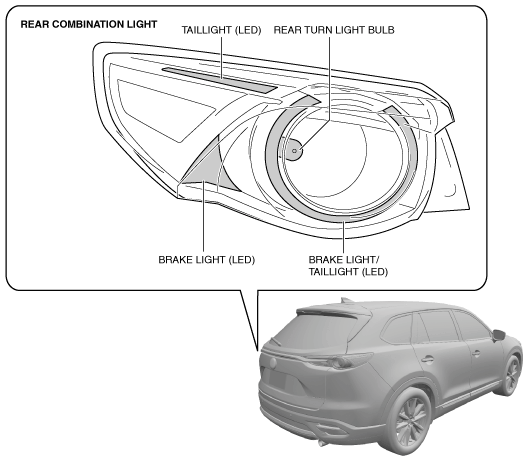 |
ac9uun00001849
REAR COMBINATION LIGHT
id091800011800
Purpose
Function
|
Operation switch |
Related light |
Operation status |
|---|---|---|
|
Light switch (TNS (parking lights))
|
Taillight
|
On
|
|
Brake switch
|
Brake light
|
On
|
|
Turn switch
|
Rear turn light
|
Flash
|
|
Hazard warning switch
|
Structure/Construction
Type A
ac9uun00001849
|
Type B
ac9uun00001850
|
Operation
Taillights
ac9uun00001851
|
Brake lights
ac9uun00001853
|
ac9uun00001854
|
ac9uun00001855
|
ac9uun00001856
|
ac9uun00001857
|
Rear turn light
ac9uun00001858
|
ac9uun00001859
|
Fail-safe